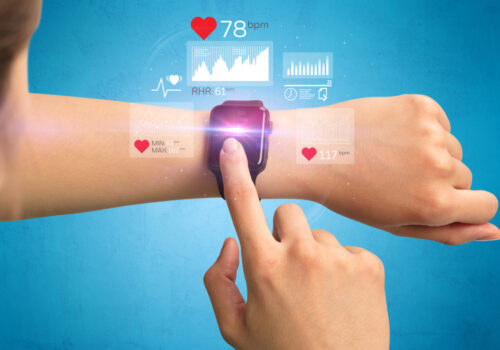About
background
Consumer wearable and smartphone devices
“Without a standard, there is no logical basis for decision making or taking action”
Joseph M. Juran
Consumer wearable and smartphone devices provide an accessible means to objectively measure aspects of physical activity such as step-counts, heart rate, energy expenditure, and VO2max. With the increasing proliferation of this technology, consumers, practitioners, and researchers are interested in leveraging these devices as a means to track and facilitate physical activity behaviour change. However, while the acceptance of these devices is increasing, the validity of many consumer devices has not been rigorously and transparently evaluated.

Vision, Mission and Goals
Towards Intelligent Health and Well-Being Network of Physical Activity Assessment (INTERLIVE®) is a joint European initiative of six universities and one industrial partner. The consortium was founded in 2019 and strives towards developing best-practice recommendations for evaluating the validity of consumer wearable and smartphones to measure direct and derived metrics.
Vision: A world where consumer wearable and smartphone devices can be used to measure direct and indirect metrics following standardized methods and protocols.
Mission: To foster expertise on the use of wearable and smartphone devices for measuring direct and indirect metrics to facilitate monitoring systems and influence individual decisions.
Goals: (1) To develop gold standard protocols for the validation of wearables in order to improve the accuracy and reliability of physical activity patterns assessment. (2) To increase awareness of the advantages and limitations of different validation protocols according to specific metrics. (3) To provide new health-related physical activity metrics and foster their wide spread use in the future.
Timeline
-

Phase 1
Focuses on the development of an expert statement suggesting a standardized protocol to validate wearables, considering two direct metrics (i.e. steps and heart rate). Pilot testing of the proposed protocols for heart rate and step counts assessments in both laboratory and free‐living conditions will be performed at each university. -

Phase 2
Focuses on the development of an expert statement suggesting a standardized protocol to validate wearables, considering two derived metrics (i.e. energy expenditure and VO2max). Pilot testing of the proposed protocols for energy expenditure and VO2max assessments in both laboratory and free‐living conditions will be performed at each university. -

Phase 3
Focuses on creating novel metrics (e.g. GPS, Wi‐Fi, noninvasive assessment of blood‐borne markers) to be incorporated into wearable devices that can be used in health‐related applications.





